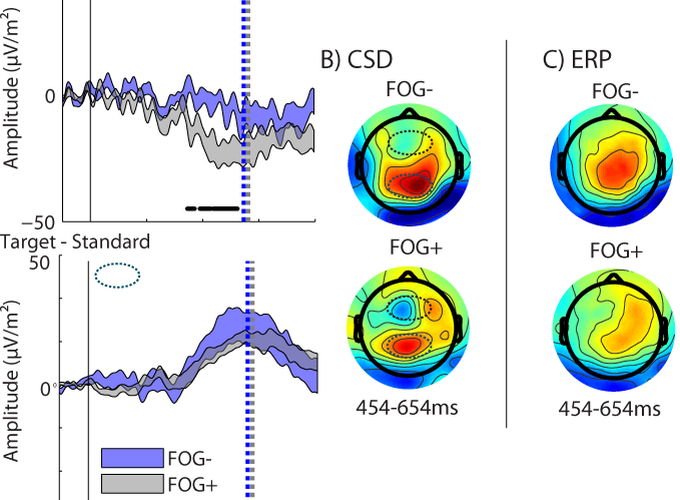Motor Preparation Rather Than Decision-Making Differentiates Parkinson's Disease Patients With And Without Freezing of Gait
Abstract
Objective: Freezing of gait (FOG) is a brief, episodic phenomenon affecting over half of people with Parkinson’s disease (PD) and leads to significant morbidity. The pathophysiology of FOG remains poorly understood but is associated with deficits in cognitive function and motor preparation. Method: We studied 20 people with PD (10 with FOG, 10 without FOG) and performed a timed response target detection task while electroencephalographic data were acquired. We analysed the data to detect and examine cortical markers of cognitive decision making (P3b or centroparietal positivity, CPP) and motor readiness potential. We analysed current source density (CSD) to increase spatial resolution and allow identification of distinct signals. Results: There was no difference in the P3b/CPP response between people with PD with and without FOG, suggesting equivalent cognitive processing with respect to decision-making. However, the FOG group had significant difference with an earlier onset and larger amplitude of the lateralized readiness potential. Furthermore, the amplitude of the lateralised readiness potential correlated strongly with total Frontal Assessment Battery score. Conclusions: The difference in lateralized readiness potentials may reflect excessive recruitment of lateral premotor areas to compensate for dysfunction of the supplementary motor area and resultant loss of automatic motor control. This early, excessive recruitment of frontal networks occurs in spite of equivalent motor scores and reaction times between groups. Significance: The saturation of frontal processing mechanisms could help explain deficits in attentional set-shifting, dual-tasking and response inhibition which are frequently reported in FOG.
